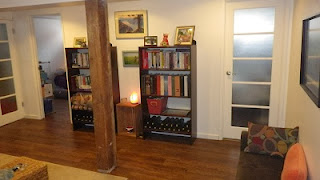As temperatures drop and the autumn leaves begin to blanket the earth we collectively embark on our migration to the warmth, comfort and protection of our indoor spaces.
According to Health Canada, we spend about 90 per cent of our time indoors at home, at work or in recreational settings such as shopping malls, restaurants and gyms. We often talk about outdoor air quality and pollution but what do we know about indoor air quality?
Given that fall is the prime time for sealing up our homes in an effort to make them more energy efficient, a look at the health of our indoor air is fitting.
Mould lives in damp environments. It might look like a stain and appear in different colours. Sometimes, though, mould is not apparent and instead there is a musty smell. High concentrations of mould spores inside your house can lead to adverse health effects such as coughing, wheezing and shortness of breath.
If the amount of mould isn’t too large, consider fixing the problem yourself. Health Canada recommends using water and dish detergent. Bleach isn’t necessary. Once that’s done, you’ll need to address the cause. There are other ways to prevent mould growth such as ensuring that your clothes dryer hose is properly vented outdoors or by repairing basement, roof and pipe leaks immediately.
Radon, which is a radioactive gas created in nature, is often found in basements and crawl spaces, where there is poor ventilation. These locations also tend to be closer to the source of radon, which is created by decaying uranium found in soil, rock and water. Radon can enter a house through cracks in the foundation or gaps around pipes. Because radon is invisible, odourless and has no taste, the only way to know for sure if you have it is to do a DIY test or call in a professional.
Formaldehyde is a colourless gas that at high levels emits a sharp smell and irritates eyes, nose and throat and can worsen asthma in children. Low levels of this gas are extremely common indoors. Formaldehyde comes from cigarette smoke, fireplaces and wood-burning stoves; paper products such as wallpaper and cardboard; paints, adhesives and floor finishes and pressed wood products used in home construction projects, furniture and cabinets.
The best way to control formaldehyde in your home is by not smoking indoors, ensuring your fireplace and woodstove are in good working order and by letting products containing formaldehyde air out before bringing them into your home.
Carbon monoxide is odourless, tasteless and colourless. Encountering low levels over long periods of time can be dangerous, but high levels can lead to death. Low-level exposure might feel like the flu. More extreme exposure can result in chest pain, confused thinking and dizziness. It’s essential that you keep fuel-burning mechanisms and appliances well vented.
It’s important to maintain your fuel-burning devices, never idle vehicles in your garage and don’t smoke indoors. Invest in a carbon monoxide detector.
The following are other general ways to bump up your indoor air quality, according to Health Canada:
* Keep adequate ventilation, especially in rooms with excess water such as bathrooms.
* Monitor and control humidity levels.
* Fix leaks and cracks in walls, floors, roofs and basements.
* Immediately clean any mould found growing in your home.
* Keep your home clean by dusting and vacuuming regularly.
* Keep the door between your garage and home closed.
* Do not store paints, solvents or varnishes inside your home.
* Coat or seal furnishings made from particle-board or medium-density fibreboard.
Learning about the condition of the air inside your home might just be the perfect winter project. There are plenty of great online sources from which to obtain more information. For starters, try Health Canada, www.lung.ca and Canada Mortgage and Housing Corp.



























